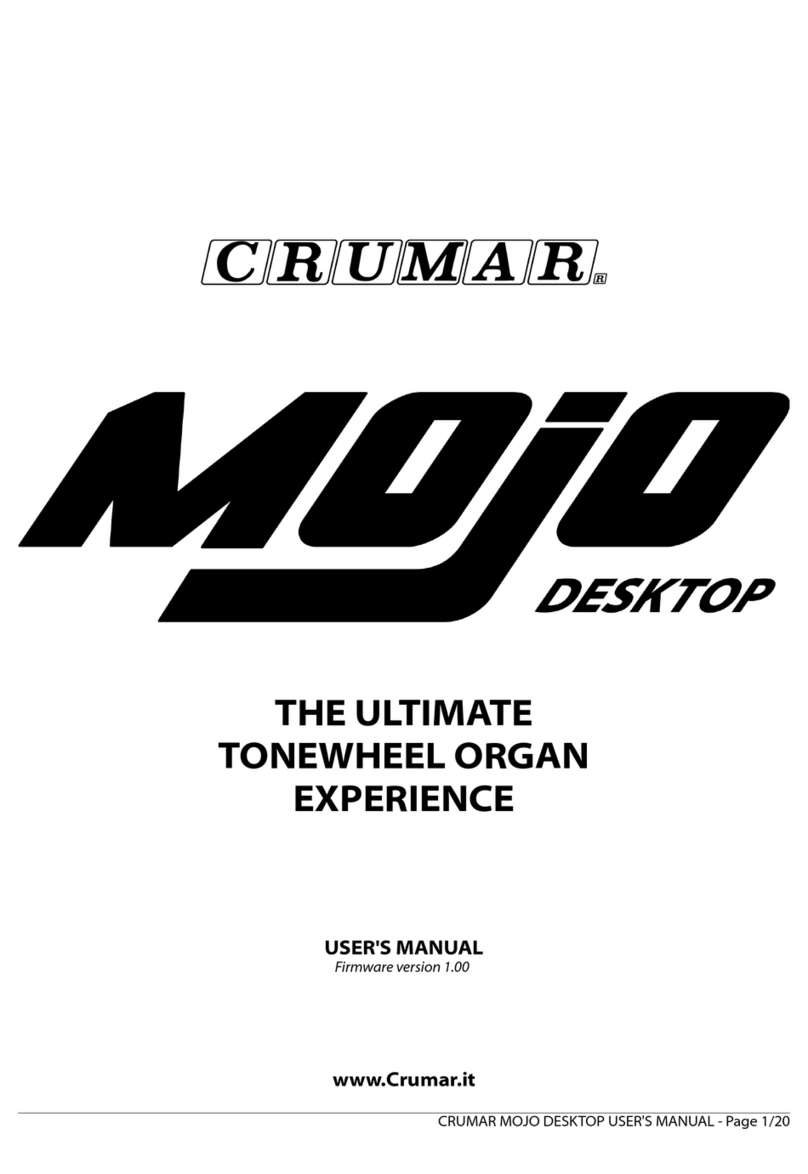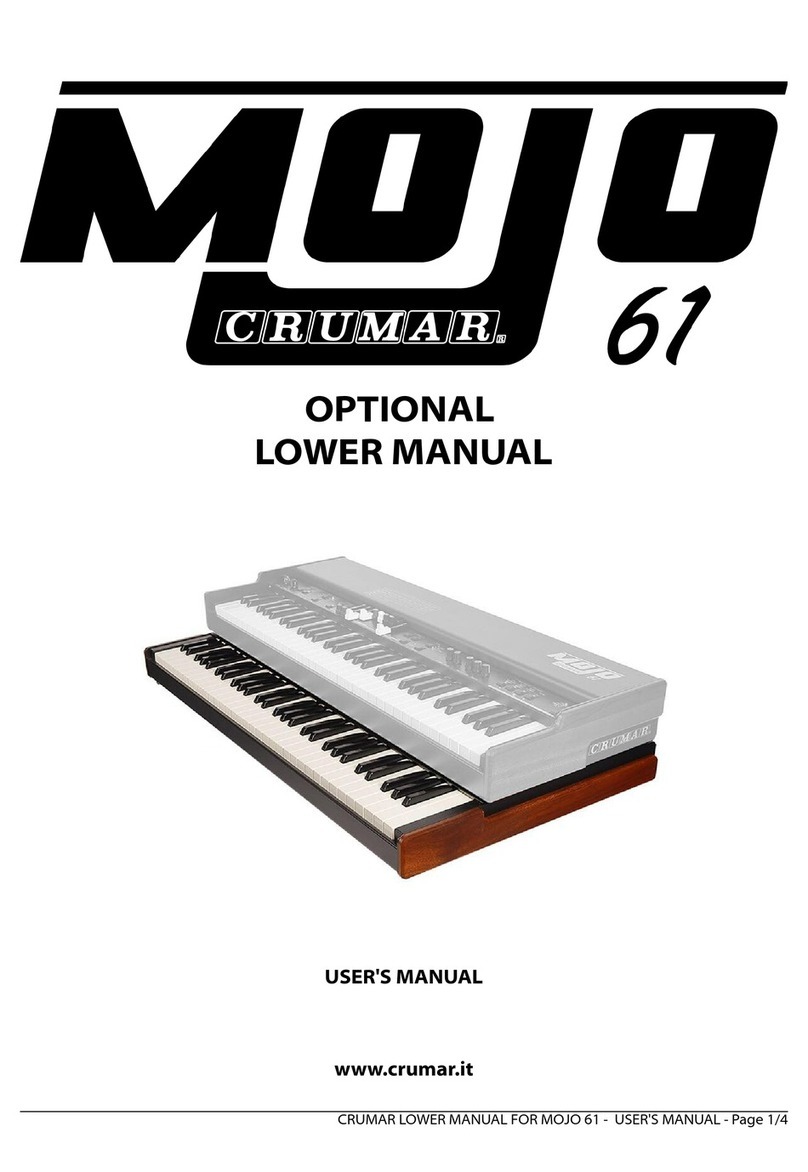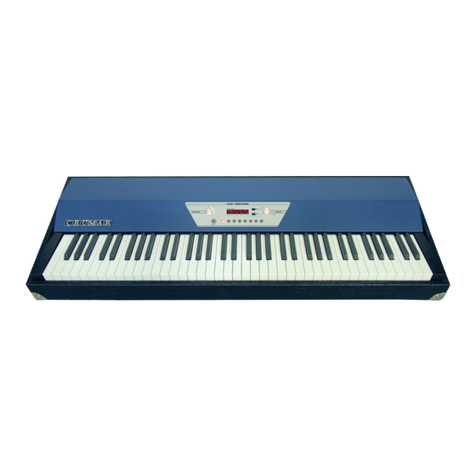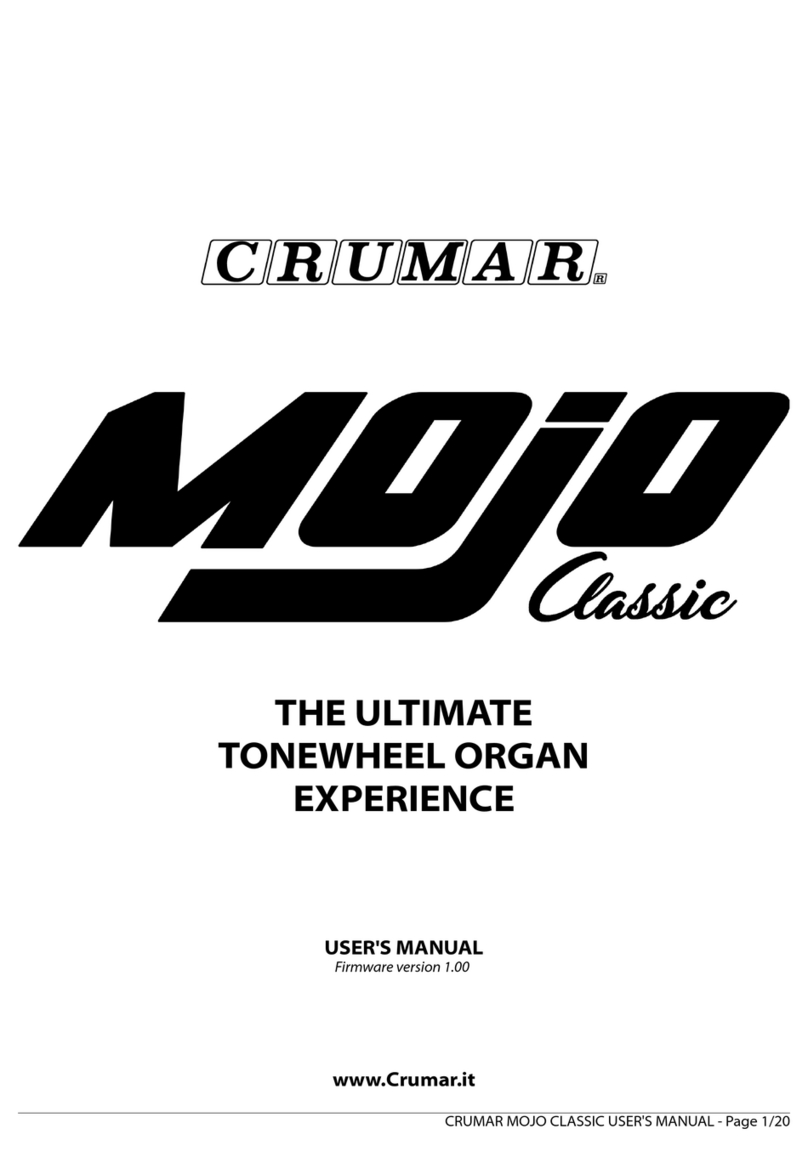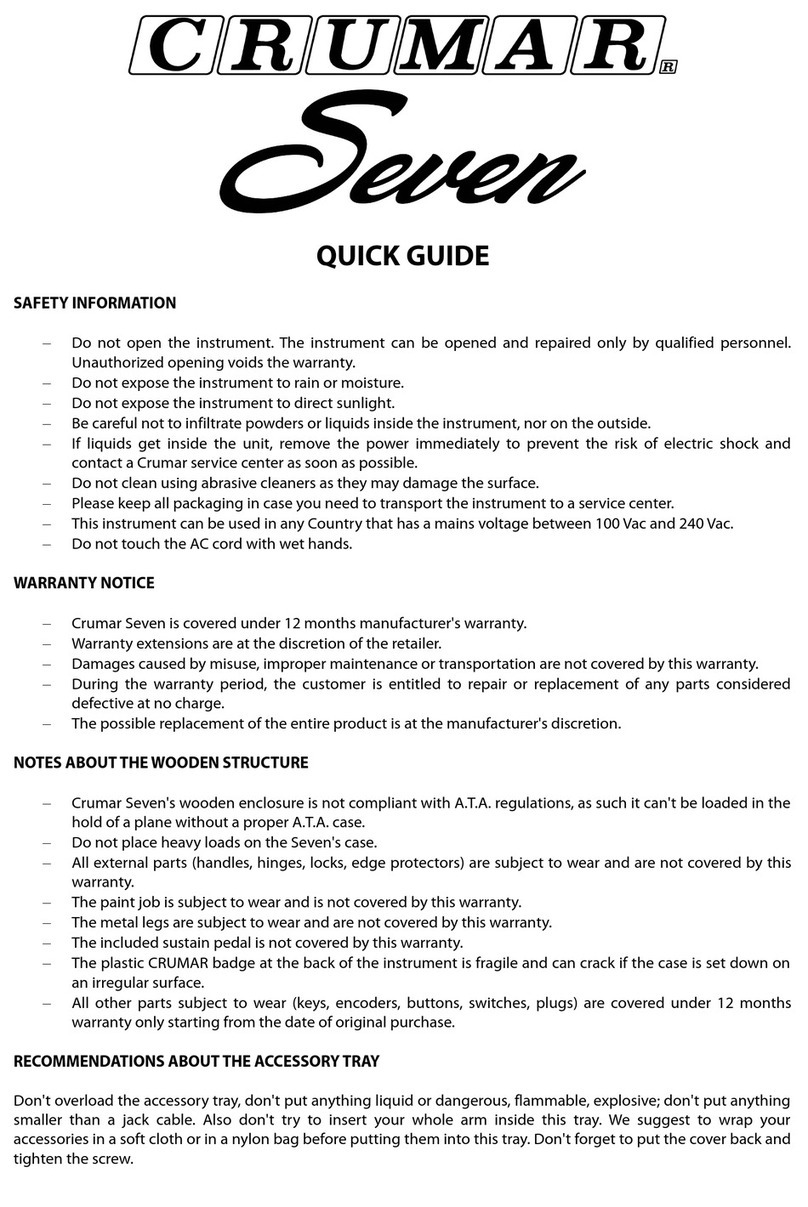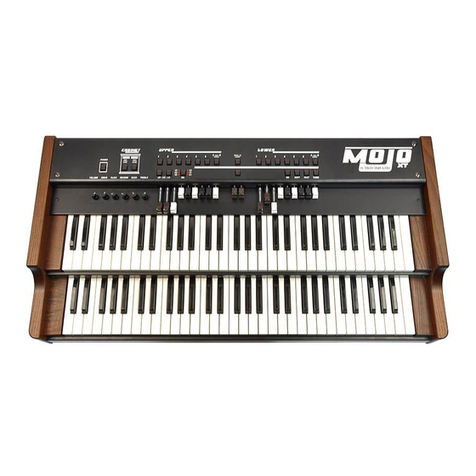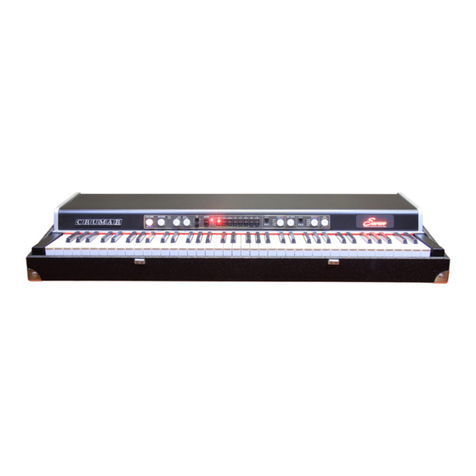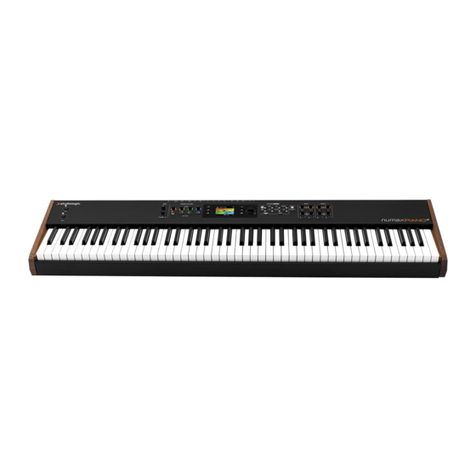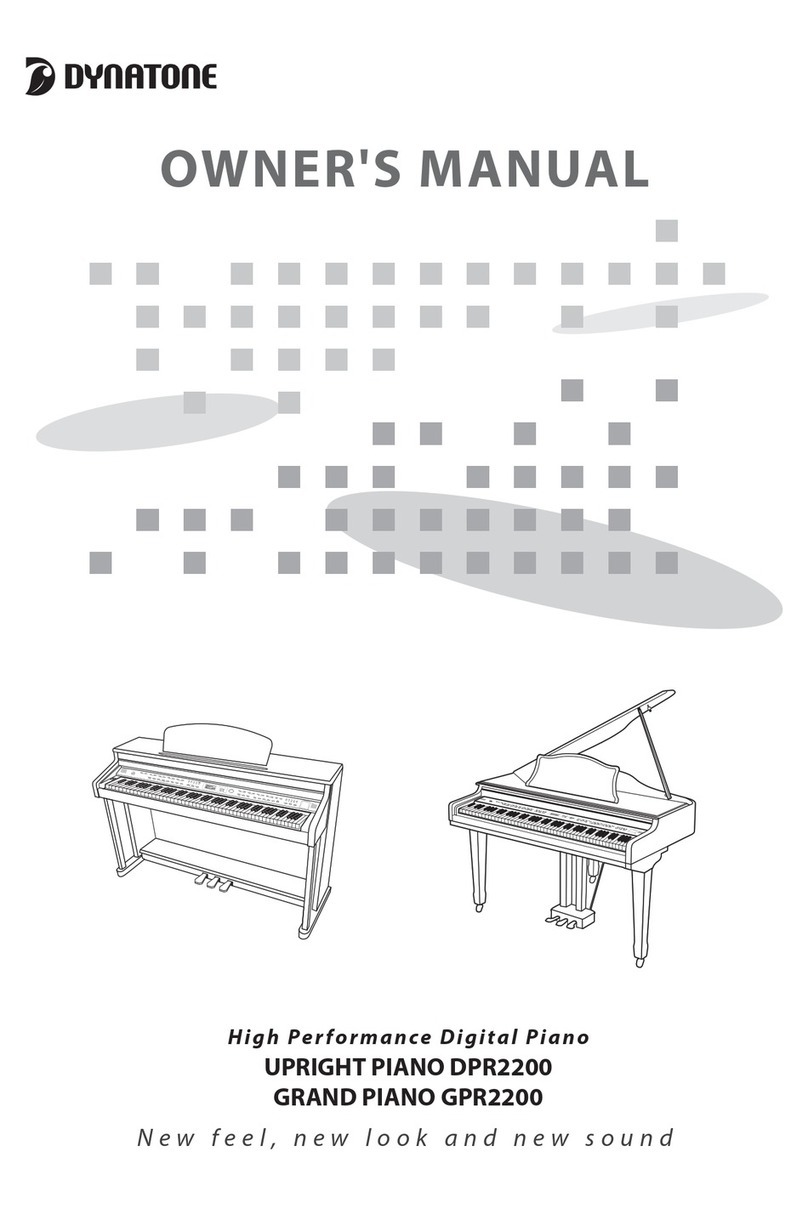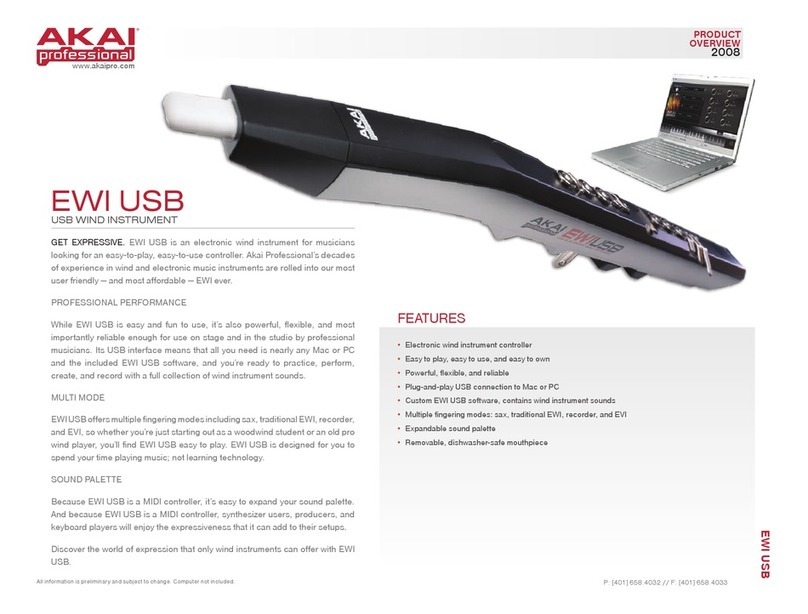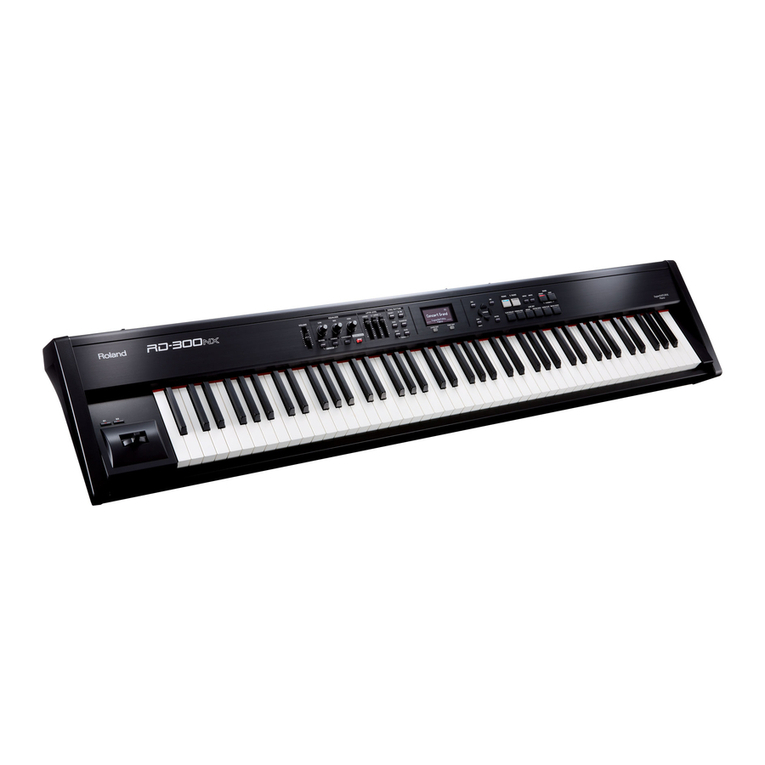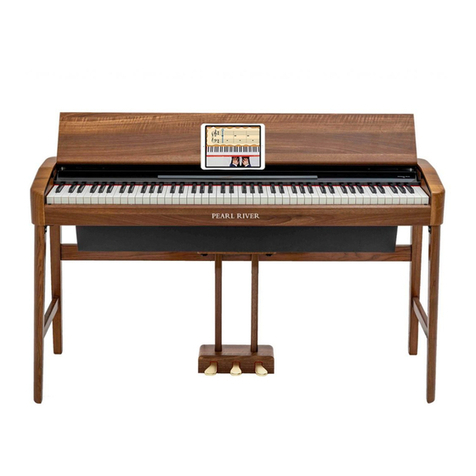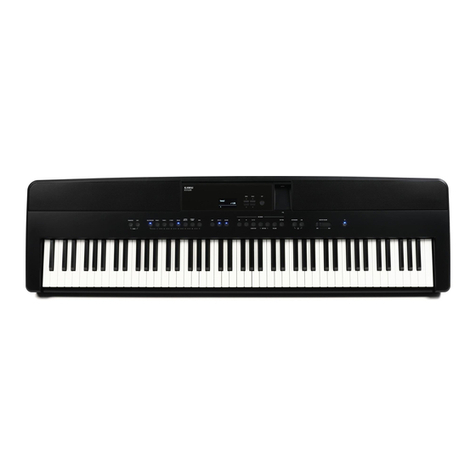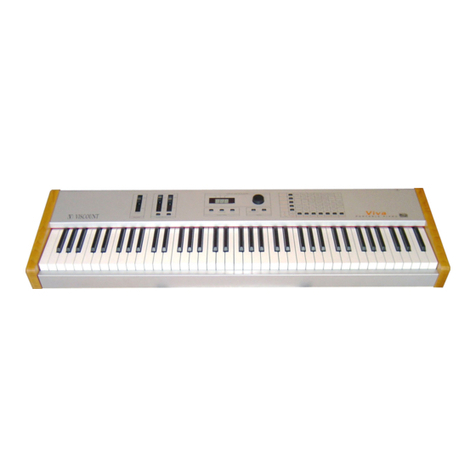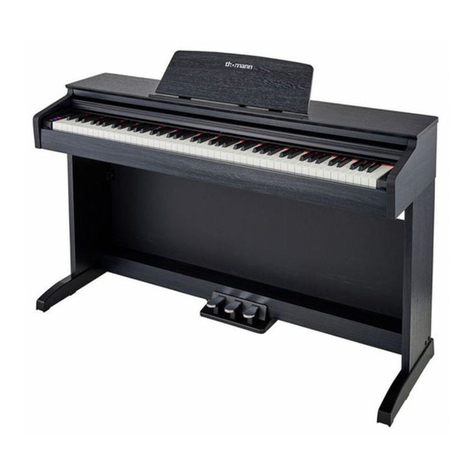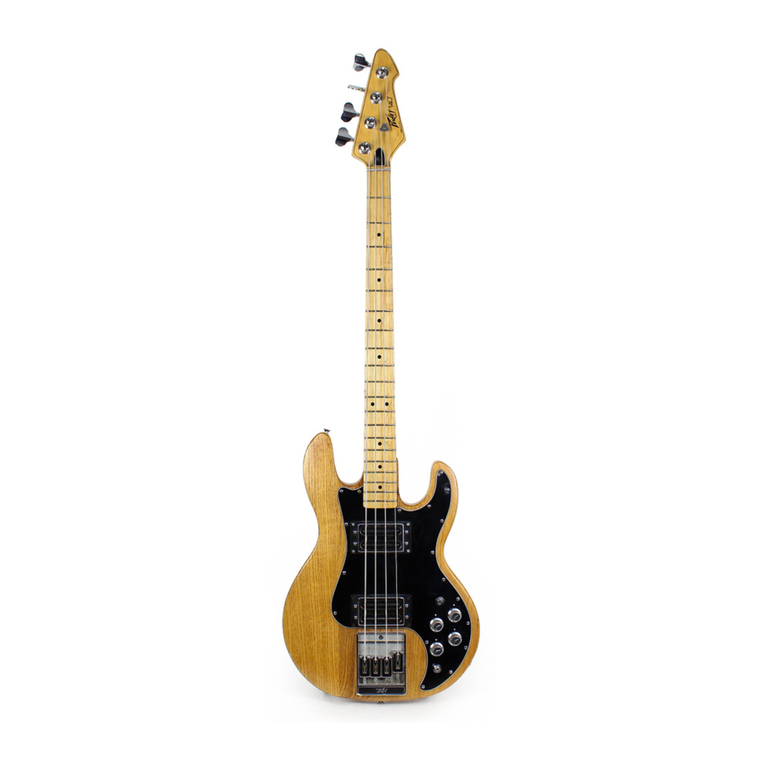–Mid reflections: adjusts the amount of sound reflectons happenng n the
m ddle of the stereo feld.
–Doppler intensity: the so called “Doppler” effect s the fundamental of the
“Lesle” effect that causes the sound to be cyclcally untuned whle the sound
source (the speaker) gets farther or nearer to the lstened; ths parameter lets
you adjust the amount of ths effect that s mostly caused by the sound
reflectons over the walls around the amplfer.
–Dry Leak: some of the dry sound com ng from the speakers does not reach the
rotatng elements and s m xed wth the rotatng sound. Use ths parameter to
adjust the amount of dry sgnal you want to be m xed n.
–Bass Port: a real Lesle cabnet has a hole n the back that serves for two
reasons: 1) lets the heat from the motors ventlate out from the cabnet and 2)
acts as a bass tunng port, lke those found on modern speakers. If you put a
m crophone n front of ths hole you get nothng but sub-bass frequences. Use
ths parameter to adjust the amount of sub-bass you want to get nto the m x.
–Tube feedback. Ths s a very mportant parameter that works on an aspect of
the whole amplfcaton system that can drastcally vary both the dynam c
response and the frequency response, as well as have an mpact on the
overdrve. When a Lesle cabnet s set very close to the Hammond organ and s
played at a hgh volume, there's some sort of feedback between the tubes, the
transformers and the pckups of the Hammond and the speakers of the Lesle,
resultng n a sound that tends to get “fatter”, the attack s “puncher” and the
dstorton s aggressve, gvng you the feelng that some sort of energy s
loopng between the organ and ts amplfer. Now, a genune Lesle 122 or 147
s only 40W of power, but f you try to connect your Hammond organ to a 100W
gutar amp such as a Marshall JCM900 or a Fender Twn you'll notce that the
amp starts gong n feedback even f you don't play any note on the organ. Ths
s... pure analog power! Try ths parameter at small steps, t can drastcally
change the sound n both a pleasant or unpleasant way, accordng to your
tastes.
–Stop Position: you can use ths parameter to fnd a poston where the horn
and rotor should “preferably” stop when you set the speed lever n the brake
poston and the “Front Stop” opton s enabled. Please consder that not always
the poston you've set s reached wth precson, t depends mostly on the
Ramp Down tmes you've set... after all t's vrtual realty, baby! It takes nto
account the knetc energy, the gravty, the belt frcton...
–Noises: well, a real rotary effect s far from beng a quet amplfer. Your
m crophones wll pck up not only the sound but also the wnd generated by
the rotatng elements, and the relays that swtch between the fast and slow
motors. Use ths parameter to adjust the amount of audble noses.
CRUMAR MOJO CLASSIC & SUITCASE USER'S MANUAL - Page 16/20



















